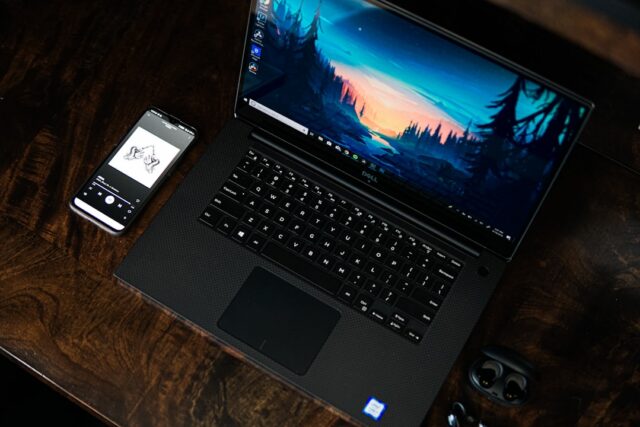The purpose of a laptop extends beyond mere portability; it serves as a versatile tool for a myriad of tasks ranging from professional work to entertainment. In the modern digital landscape, laptops are indispensable for students, professionals, and casual users alike. They facilitate a seamless transition between various environments, whether it be a bustling coffee shop, a quiet library, or a corporate office.
The functionality of a laptop is often defined by its ability to handle diverse applications, from word processing and spreadsheet management to graphic design and gaming. This adaptability is crucial in an era where remote work and online learning have become the norm. Moreover, the functionality of laptops is enhanced by their operating systems, which dictate the user experience and software compatibility.
Windows, macOS, and Linux each offer unique features tailored to different user needs. For instance, Windows is renowned for its extensive software library, making it a favorite among gamers and business professionals. In contrast, macOS is often preferred by creative professionals due to its robust multimedia capabilities and intuitive interface.
Linux appeals to tech enthusiasts and developers who appreciate its open-source nature and customization options. Thus, the purpose and functionality of a laptop are intricately linked to its intended use and the operating system it runs.
Performance and Specifications
When evaluating a laptop’s performance, several key specifications come into play, including the processor, RAM, and graphics capabilities. The processor, often referred to as the brain of the laptop, plays a pivotal role in determining how efficiently tasks are executed. Modern laptops typically feature Intel or AMD processors, with varying performance tiers.
For instance, Intel’s Core i5 and i7 series are popular choices for mid-range to high-end laptops, offering a balance between power and energy efficiency. On the other hand, AMD’s Ryzen series has gained traction for its competitive performance in both multi-threaded applications and gaming scenarios. RAM is another critical component that influences performance.
A laptop equipped with 8GB of RAM is generally sufficient for everyday tasks such as web browsing and document editing. However, for more demanding applications like video editing or 3D rendering, 16GB or even 32GB may be necessary to ensure smooth operation. Additionally, the type of RAM—DDR4 versus DDR5—can also impact speed and efficiency.
Graphics performance is equally important, especially for gamers and creative professionals. Integrated graphics may suffice for basic tasks, but dedicated GPUs from NVIDIA or AMD are essential for high-end gaming or graphic-intensive applications.
Design and Portability

The design of a laptop significantly influences its usability and appeal. A well-designed laptop not only looks aesthetically pleasing but also enhances user experience through thoughtful ergonomics. Factors such as weight, thickness, and build quality contribute to a laptop’s overall portability.
Ultrabooks, for example, are designed to be lightweight and slim without compromising on performance. These devices often feature premium materials like aluminum or carbon fiber, which not only reduce weight but also enhance durability. Portability is particularly important for users who are frequently on the move.
A laptop that weighs around 3 pounds or less is generally considered portable enough for travel. Additionally, battery life plays a crucial role in determining how practical a laptop is for users who need to work away from power outlets. Many modern laptops boast battery lives exceeding 10 hours, allowing users to work throughout the day without needing to recharge.
The combination of sleek design and robust portability makes certain laptops ideal companions for students and professionals who require flexibility in their work environments.
Display and Graphics
| Metrics | Value |
|---|---|
| Resolution | 1920×1080 pixels |
| Refresh Rate | 60 Hz |
| Response Time | 5 ms |
| Color Gamut | sRGB 100% |
The display quality of a laptop can greatly affect the user experience, especially for those who spend long hours in front of their screens. Factors such as resolution, color accuracy, brightness, and refresh rate are essential considerations when evaluating a laptop’s display capabilities. Full HD (1920 x 1080) resolution has become the standard for most laptops, providing sharp images and clear text.
However, higher resolutions like 4K (3840 x 2160) are increasingly available in premium models, offering stunning visuals that are particularly beneficial for graphic designers and video editors. Color accuracy is another critical aspect of display quality. Laptops with IPS (In-Plane Switching) panels tend to offer better color reproduction and wider viewing angles compared to traditional TN (Twisted Nematic) panels.
This is particularly important for creative professionals who rely on accurate color representation in their work. Additionally, features such as high refresh rates (120Hz or higher) can enhance the gaming experience by providing smoother motion during fast-paced action sequences. The combination of these display characteristics can significantly elevate the overall usability of a laptop.
Storage and Memory
Storage options in laptops have evolved significantly over the years, with traditional hard drives (HDDs) being largely replaced by solid-state drives (SSDs). SSDs offer faster data access speeds, which translates to quicker boot times and improved application loading times. For users who require ample storage space for large files such as videos or high-resolution images, laptops with capacities ranging from 512GB to 2TB SSDs are becoming increasingly common.
Some models even offer hybrid storage solutions that combine SSDs for speed with HDDs for additional capacity. Memory is another critical factor that impacts a laptop’s performance. While RAM is essential for multitasking capabilities, storage memory determines how much data can be stored on the device itself.
The trend towards cloud storage solutions has also influenced how users approach storage needs; many now rely on services like Google Drive or Dropbox to supplement their local storage capacity. This shift allows users to opt for smaller internal storage options while still having access to vast amounts of data online.
Keyboard and Input Devices

The keyboard and input devices of a laptop play a crucial role in user interaction and overall comfort during extended use. A well-designed keyboard should provide tactile feedback while maintaining a comfortable layout that minimizes strain on the fingers. Key travel distance—the distance keys move when pressed—can significantly affect typing comfort; most users prefer a key travel of around 1.5mm to 2mm for optimal feedback without feeling too soft or too stiff.
In addition to the keyboard, touchpads have also evolved significantly over time. Modern touchpads often support multi-touch gestures that allow users to perform actions such as zooming or scrolling with simple finger movements. Some laptops even incorporate precision touchpads that offer enhanced responsiveness and accuracy compared to traditional models.
For users who require more precise control—such as graphic designers—external input devices like styluses or graphic tablets may be preferred.
Connectivity and Ports
Connectivity options are essential for ensuring that a laptop can interface with various peripherals and networks effectively. The inclusion of multiple USB ports—both Type-A and Type-C—allows users to connect external drives, mice, keyboards, and other devices without hassle. Thunderbolt 3 ports have gained popularity due to their high data transfer speeds and versatility in connecting multiple devices through daisy-chaining.
Wireless connectivity has also become increasingly important in today’s digital age. Most modern laptops come equipped with Wi-Fi 6 technology, which offers faster speeds and improved performance in crowded environments compared to previous standards like Wi-Fi 5. Bluetooth connectivity is another essential feature that enables users to connect wireless peripherals such as headphones or speakers seamlessly.
The combination of robust wired and wireless connectivity options ensures that users can remain productive regardless of their environment.
Price and Value
The price of laptops can vary widely based on specifications, brand reputation, and intended use cases. Entry-level models may start at around $300 to $500, making them accessible for students or casual users who primarily engage in web browsing or document editing. Mid-range laptops typically fall within the $600 to $1,200 range and offer a balance between performance and affordability, catering to professionals who require more robust capabilities without breaking the bank.
High-end laptops can exceed $1,500 or even reach upwards of $3,000 for premium models designed for gaming or professional creative work. While these devices often come equipped with top-tier specifications—such as powerful processors, high-resolution displays, and ample storage—they may not be necessary for all users. Therefore, understanding one’s specific needs is crucial when evaluating price versus value in the laptop market.
Ultimately, investing in a laptop that aligns with individual requirements can lead to enhanced productivity and satisfaction over time.
FAQs
What is the main difference between gaming laptops and creator laptops?
The main difference between gaming laptops and creator laptops lies in their primary purpose. Gaming laptops are designed for high-performance gaming, with features such as powerful graphics cards and high refresh rate displays, while creator laptops are optimized for content creation tasks such as video editing, graphic design, and 3D modeling, with features like color-accurate displays and powerful processors.
What are the key features of gaming laptops?
Gaming laptops typically feature high-end graphics cards, fast refresh rate displays, and advanced cooling systems to handle the demands of modern gaming. They also often have customizable RGB lighting, dedicated gaming keyboards, and a focus on performance for gaming applications.
What are the key features of creator laptops?
Creator laptops are designed with features that cater to content creation tasks, such as color-accurate displays with high resolution, powerful processors for rendering and editing, and ample storage for large media files. They also often have a focus on portability and battery life for on-the-go productivity.
Can gaming laptops be used for content creation, and vice versa?
While gaming laptops can be used for content creation tasks, they may not offer the same level of color accuracy and display resolution as creator laptops. Similarly, creator laptops can handle gaming to some extent, but they may not provide the same level of performance and graphics capabilities as dedicated gaming laptops.
Which type of laptop is better for someone who needs both gaming and content creation capabilities?
For someone who needs both gaming and content creation capabilities, it may be best to choose a laptop that strikes a balance between the two. Look for a laptop with a powerful processor, high-end graphics card, color-accurate display, and ample storage to meet both gaming and content creation needs.



MOST COMMENTED
Apps
10 Hidden Android Apps: Boost Productivity Instantly
Apps
Privacy-Focused Messaging Apps: A 2025 Comparison
Apps
Top Minimalist Apps for a Distraction-Free Life
Apps
Top Offline Apps for 2025: No Internet Needed
Gadget
The Battle of Wearables: Smart Rings vs. Smartwatches
Gadget
The Future of Mental Health: Wearable Gadgets on the Rise
Laptops
Top Laptops for Coding and Content Creation Under ₹70,000